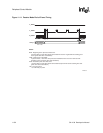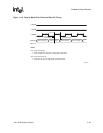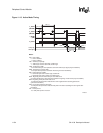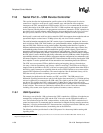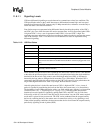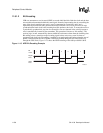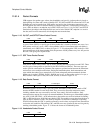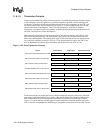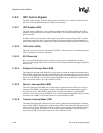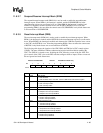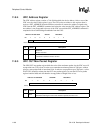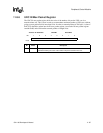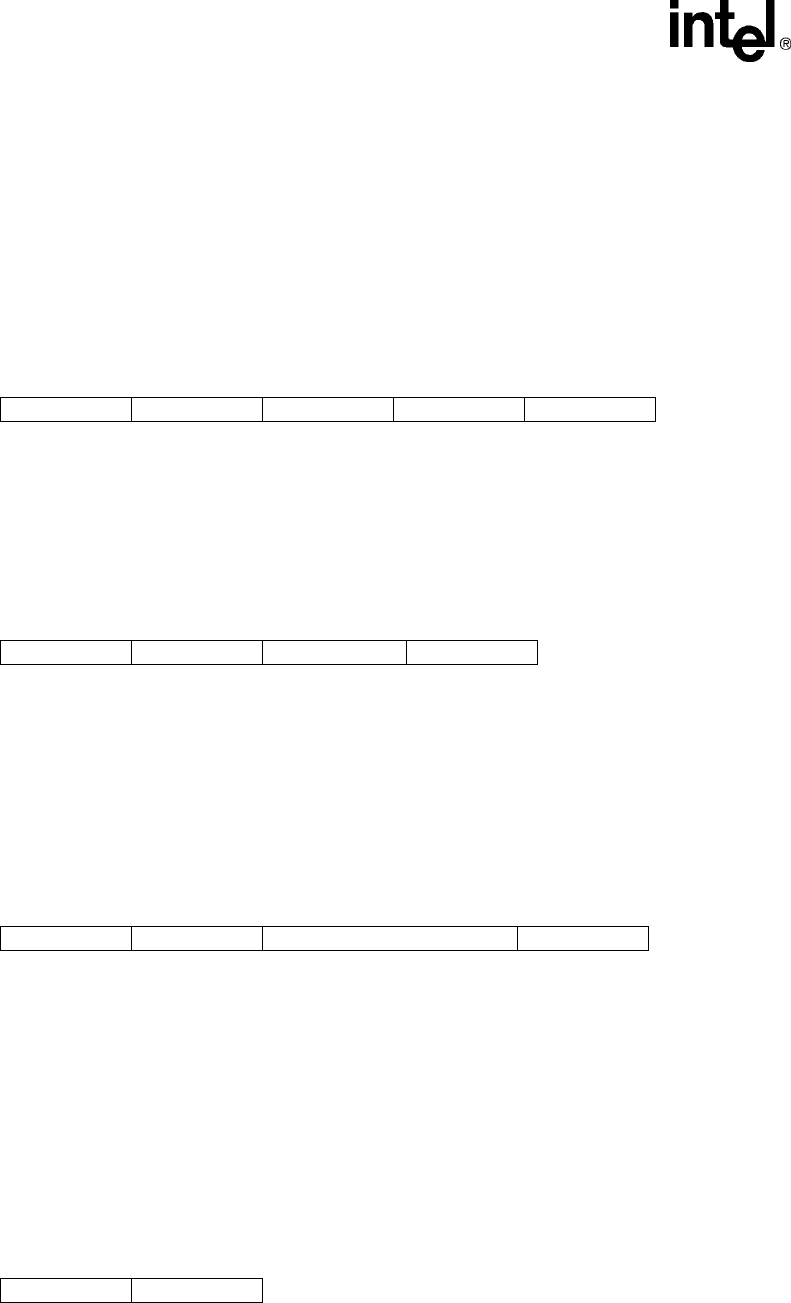
11-60 SA-1100
Developer’s Manual
Peripheral Control Module
11.8.1.4 Packet Formats
USB supports four packet types: token, data, handshake, and special. A token packet is placed at
the beginning of a frame and is used to identify OUT, IN, SOF, and SETUP transactions. OUT and
IN frames are used to transfer data, SOF packets are used to time isochronous transactions, and
SETUP packets are used for control transfers to configure endpoints. A token packet consists of a
sync, a PID, an address, an endpoint, and a CRC5 field (see Figure 11-16). For OUT and SETUP
transactions, the address and endpoint fields are used to select which UDC endpoint is to receive
the data, and for an IN transaction, which endpoint must transmit data.
Figure 11-16. IN, OUT, and SETUP Token Packet Format
A start of frame (SOP) is a special type of token packet that is issued by the host once every 1 ms.
SOF packets consist of a sync, a PID, a frame number (which is incremented after each frame is
transmitted), and a CRC5 field, as shown in Figure 11-17.
Even though the UDC on the SA-1100
does not make use of the frame number field, the presence of SOF packets every 1ms will prevent
the UDC from going into suspend mode.
Figure 11-17. SOF Token Packet Format
Data packets follow token packets, and are used to transmit data between the host and UDC. There
are two types of data packets as specified by the PID: DATA0 and DATA1. These two types are
used to provide a mechanism to guarantee data sequence synchronization between the transmitter
and receiver across multiple transactions. During the handshake phase, both communicate and
agree which data token type to transmit first. For each subsequent packet transmitted, the data
packet type is toggled ( DATA0, DATA1, DATA0, and so on). A data packet consists of a sync, a
PID, from 0 to 1023 bytes of data, and a CRC16 field, as shown in Figure 11-18.
Figure 11-18. Data Packet Format
Handshake packets consist of only a sync and a PID. Handshake packets do not contain a CRC
because the PID contains its own check field. They are used to report data transaction status,
including whether data was successfully received, flow control, and stall conditions. Only
transactions that support flow control can return handshakes. The three types of handshake packets
are: ACK, NAK, and STALL. ACK indicates that a data packet was received without bit stuffing,
CRC, or PID check errors. NAK indicates that the UDC was unable to accept data from the host or
it has no data to transmit. NAK is also used by endpoint 1 to indicate no interrupts are pending.
STALL indicates that the UDC is unable to transmit or receive data, and requires host intervention
to clear the stall condition. Bit stuffing, CRC, and PID errors are signalled by the receiving unit by
omitting a handshake packet. Figure 11-19 shows the format of a handshake packet.
Figure 11-19. Handshake Packet Format
8 bits 8 bits 7 bits 4 bits 5 bits
Sync PID Address Endpoint CRC5
8 bits 8 bits 11 bits 5 bits
Sync PID Frame Number CRC5
8 bits 8 bits 0–1023 bytes 16 bits
Sync PID Data CRC16
8 bits 8 bits
Sync PID



